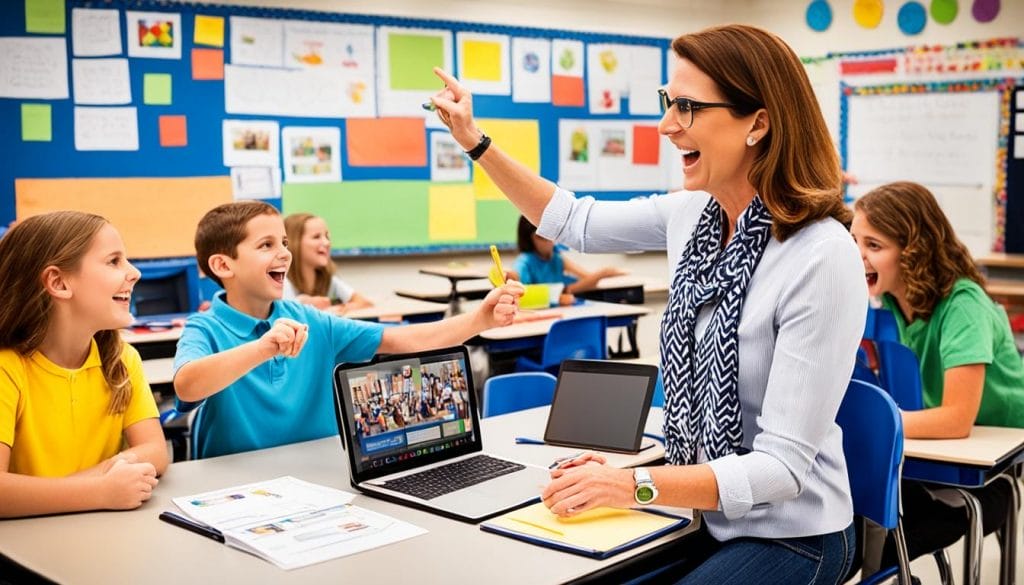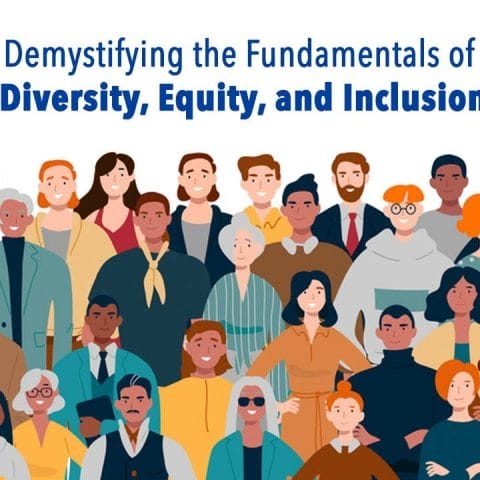Did you know that students in blended learning settings often feel 25% more motivated than those in traditional classrooms? This shows how mixing digital learning with face-to-face teaching can really help. In today’s fast-changing education world, making sure students stay motivated in blended learning is very important.
We will explore how this approach changes education for the better. We’ll find out how new strategies can make students more engaged and improve their learning.
Key Takeaways
- Blended learning combines traditional and digital formats for enhanced learning.
- Higher student engagement leads to improved academic outcomes.
- Motivation is key to successful learning in blended environments.
- Innovative strategies can effectively boost student motivation.
- Technology plays a vital role in personalizing the learning experience.
- Building strong relationships is essential for enhancing motivation.
Understanding Blended Learning
Blended learning mixes traditional teaching with online learning. It offers a flexible way to learn, fitting different learning styles. As technology grows, knowing about blended learning is key for teachers to keep students engaged and motivated online.
Definition of Blended Learning
Blended learning combines classroom learning with online work. Students can learn at their own speed and use many resources outside class. This mix creates a flexible learning space that meets each student’s needs.
Benefits of Blended Learning for Students
Students gain many benefits from blended learning, such as:
- Flexibility: They can pick when and where to learn, helping with time management.
- Individualized Learning Paths: They can focus on their strengths and weaknesses, making their learning personal.
- Enhanced Engagement: Digital tools often make students more active and interested in learning.
Key Components of Blended Learning
Good blended learning programs have a few key parts:
- Clear Learning Goals: Setting clear goals helps students know what they’re aiming for.
- Utilization of Educational Technologies: Digital tools can make learning more effective.
- Integrated Curriculum: Combining online and offline learning helps students work together and remember more.
The Importance of Student Motivation
Student motivation is key to doing well in school. It greatly affects how well students learn and perform. When students are motivated, they dive deeper into their studies. This leads to better understanding and remembering what they learn.
Studies show that being motivated helps students do better in school. Teachers need to know how to make learning exciting for students.
Why Motivation Matters in Education
Motivation pushes students to reach their goals. When students are motivated, they focus better and keep going, even when it’s tough. Student engagement is higher when they’re motivated.
Online learning motivation is crucial. It helps students stay on track and keep pushing forward. Teachers can make learning more motivating to help students do their best.
Distinguishing Between Intrinsic and Extrinsic Motivation
It’s important to know the difference between intrinsic and extrinsic motivation. Intrinsic motivation comes from wanting to learn for its own sake. Extrinsic motivation comes from things like getting good grades or rewards.
Both types of motivation help students stay engaged. Teachers can use new methods like gamification to make online learning more exciting. For more ideas, check out this resource.
Strategies to Enhance Student Motivation
Boosting student motivation in blended learning needs creative ideas. Teachers can engage students by mixing tech with teaching best practices. Using gamification, personalized learning, and group projects can make learning more fun and interactive.
Incorporating Gamification Elements
Gamification adds game features to learning, making it fun. It uses points, badges, and leaderboards to make students feel accomplished and competitive. This approach suits different learning styles, making lessons enjoyable and motivating. Studies show it boosts student participation in online learning.
Offering Personalized Learning Experiences
Personalized learning fits education to each student’s needs. It uses tools to find out how students learn best. This way, students can choose their pace and content, feeling more in charge of their learning. This freedom boosts motivation and helps students take pride in their learning.
Implementing Collaborative Projects
Group projects improve teamwork and communication. Students share tasks and learn from each other. This method builds a community and a supportive learning space. Digital tools for group work can make blended learning more engaging and motivating.
| Strategy | Description | Benefits |
|---|---|---|
| Gamification | Integration of game elements into learning activities. | Increased engagement, motivation, and participation. |
| Personalized Learning | Catering educational experiences to individual learning preferences. | Empowerment, ownership, and improved understanding. |
| Collaborative Projects | Team-based learning experiences that promote shared responsibility. | Enhanced communication skills and community feeling. |
Fostering Student Engagement in Digital Learning
In today’s education world, making digital learning engaging is key to success. When teachers use technology well, students get more involved. This leads to better learning experiences that meet everyone’s needs.
Utilizing Educational Technology Effectively
Educational technology includes many digital tools and platforms. These help teachers teach better and students learn more. With learning management systems, teachers can easily track student progress.
Students can access resources anytime, anywhere. This encourages them to take charge of their learning.
Creating Interactive Virtual Classrooms
Interactive virtual classrooms make students want to join in. They offer live discussions, quizzes, polls, and group work sessions. These activities increase student interest and build a sense of community.
Combining fun activities with teamwork tools helps students connect with the material and each other. This leads to better learning results.
| Feature | Benefits |
|---|---|
| Learning Management Systems (LMS) | Streamlined access to resources and assessments, fostering self-directed learning. |
| Live Discussions | Enhances real-time interaction, contributing to a dynamic learning environment. |
| Polling and Quizzes | Encourages immediate feedback and keeps students actively involved. |
| Breakout Rooms | Facilitates collaboration among students, promoting teamwork and communication skills. |
Student motivation in blended learning environments
Blended learning has changed how we teach, making student motivation key. Studies show that blended learning lets students control their learning. This makes them more motivated.
Impact of the Blended Learning Model on Student Motivation
Blended learning makes students more motivated by giving them choices in learning. This freedom helps them connect better with their learning. It combines online and classroom learning, which is great for staying motivated.
Comparative Analysis of Blended Learning vs. Traditional Learning
Blended learning beats traditional learning in keeping students motivated. Students in blended programs are more committed to their studies. This is thanks to technology, which gives quick feedback and makes learning better.
| Aspect | Blended Learning | Traditional Learning |
|---|---|---|
| Flexibility | High | Low |
| Student Engagement | High | Moderate |
| Autonomy | Enhanced | Limited |
| Use of Technology | Integral | Supplementary |
Effects on Achievement and Academic Performance
Blended learning is linked to better achievement. Students in blended programs do better academically because they’re more motivated. They learn at their own speed, which helps them understand the material deeply.
Overcoming Common Challenges in Remote Learning

Remote learning has its own set of challenges that can make students less motivated. It’s crucial for teachers to know what stops students from staying engaged. Issues like not having the right technology, feeling alone, and managing their own study space are common problems. By tackling these issues, teachers can help students stay active in their learning.
Identifying Barriers to Student Motivation
Figuring out what stops students from being motivated is key. Some main problems include:
- Limited access to technology, affecting participation
- Social isolation, which minimizes peer interaction
- Lack of structure in learning environments
- Difficulty with self-direction in remote learning scenarios
Knowing these challenges helps teachers find better ways to support their students. For more info on how to use technology to help learning, check out this comprehensive guide.
Strategies to Engage Students Who Are Disconnected
To get students who feel left out back into learning, teachers need new ideas. Here are some good methods:
- Regular check-ins to foster connection and monitor progress
- Incorporating interactive elements, such as polls or quizzes, during lessons
- Providing opportunities for peer collaboration through group projects
- Encouraging virtual study groups to enhance community feeling
These methods make learning more lively and interactive. This is important for overcoming the challenges that make students less motivated. To learn more about making learning personal, look into adaptive learning technologies.
By using these strategies, teachers can start to overcome the hurdles that make students less motivated. This helps students stay more engaged in learning from home.
Leveraging Feedback and Assessment for Motivation
Feedback and formative assessment are key to boosting student engagement in blended learning. They help teachers see how students are doing, spot areas where they need help, and change their teaching. This makes learning more effective.
The Role of Formative Assessment
Formative assessment is a powerful tool for better teaching. Teachers use quizzes, discussions, or assignments to check understanding. This feedback helps teachers adjust their teaching on the spot.
Students see where they need to improve, which helps them grow. Seeing their progress motivates them to work harder and keep going.
Using Student Feedback to Improve Engagement
Asking students what they think about the course and teaching is crucial. It makes them feel their opinions count. When teachers make changes based on what students say, the learning environment gets better.
This back-and-forth between teachers and students builds stronger relationships. It also makes students more motivated to learn.
The Role of Teachers in Boosting Motivation

Teachers play a big role in making students motivated, especially in blended learning. They use effective teaching methods to keep students engaged and successful. Building strong relationships with students is key. These relationships help students trust their teachers and talk openly.
Effective Teaching Practices in Blended Learning
In blended learning, it’s important for teachers to use effective teaching methods. They can do this by:
- Differentiated instruction: This means tailoring lessons for different students’ needs. It makes sure everyone feels supported.
- Ongoing support: Regular check-ins and feedback help students overcome obstacles and stay motivated.
- Interactive content: Using multimedia tools makes learning fun and engaging.
These practices can make students more engaged and improve their learning. Research shows that how teachers adapt can greatly affect distance learning success. Using effective teaching practices is crucial for a good student experience.
The Importance of Teacher-Student Relationships
The bond between teachers and students is key to motivating students. A good relationship makes students feel safe to share their thoughts and questions. The benefits of a strong teacher-student relationship include:
| Benefit | Description |
|---|---|
| Increased Trust | Trust helps students ask for help without worrying about being judged. |
| Enhanced Engagement | Students are more likely to take part when they feel connected to their teachers. |
| Boosted Confidence | Supportive relationships help students feel better about themselves, which boosts their motivation. |
Good teacher-student relationships help motivate students and lead to better grades. These connections let teachers understand what their students need. This makes it easier to use effective teaching methods in blended learning.
Conclusion
To boost student motivation in blended learning, we need a full plan. This plan should include great teaching, customized learning, and smart use of digital tools. By using different teaching methods and engaging resources, teachers make learning fun and interesting for all students.
Using strategies like making learning fun, working together, and testing in a way that fits each student is key. This not only meets students’ unique needs but also makes them really excited about learning. By focusing on motivation, we can see big improvements in how well students do in school and how much they enjoy learning.
Teachers and schools that try new things, like Hyperspace, can really change blended learning for the better. By making motivation a top priority, we help students not just do well in school. We also help them keep loving to learn for the rest of their lives.
FAQ
What is blended learning?
Blended learning mixes traditional classrooms with online tools. It gives students a flexible and personalized way to learn.
How does blended learning improve student motivation?
It makes learning more flexible and personal. Students get to choose how they learn. This makes them more engaged and motivated.
What strategies can educators use to boost student motivation in blended learning environments?
Teachers can use games, make learning personal, and work on projects together. These methods help students stay motivated and interested.
What role does educational technology play in fostering student engagement?
Tech tools help deliver lessons smoothly and get students involved. They make learning online more engaging and fun.
How can feedback and assessment enhance student motivation?
Feedback and assessments help students see their progress. They feel more in control of their learning, which boosts their motivation.
Why are teacher-student relationships important for student motivation?
Good relationships with teachers create trust and open communication. They help tailor lessons to students’ needs, making them more motivated.
What are some common challenges educators face in remote learning?
Teachers struggle with students feeling disconnected and unmotivated. Issues like not having the right tech and feeling alone can make it hard.
How does gamification impact student engagement in blended learning?
Gamification adds fun elements to learning. It makes classes more enjoyable and keeps students actively involved, boosting their motivation.





